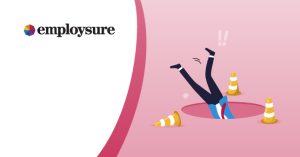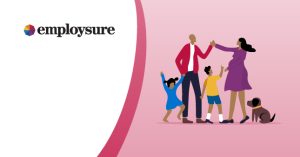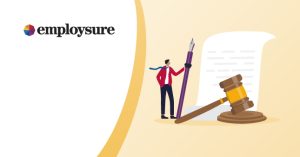
Health and Safety
What is the meaning of health and safety?
The term 'health and safety' refers to preventing or mitigating any accidents or incidents in your workplace that may cause injury or harm to your employees. The practice of health and safety consists of guidelines, policies, procedures, legislation and regulations that protect the welfare of people who work within or visit your workplace. The overall goal of your health and safety efforts is to create a safe working environment, reducqing the risk of accidents, injuries and fatalities occurring 'on the job'.
Why is health and safety important?
Health and Safety helps ensure all employees feel at ease in their workplace and are able to perform their best work without unnecessary risks to their health. More often than not, efforts to deal with any health and safety issues after they've happened are more of a burden to a business than implementing initiatives to ensure proper health and safety to begin with. In some countries, including New Zealand, health and safety legislation is criminal law and employers are legally obliged to comply with it. In New Zealand, an employer's health and safety obligations are laid out in the Health and Safety at Work Act 2015 (HSWA), with WorkSafe NZ acting as the regulator.
What are the benefits of health and safety?
Maintaining effective health and safety practices offers a wide range of benefits. These include:
Improved physical and mental health among employees.
Decreased absences among employees.
Greater productivity.
Increased job satisfaction and worker engagement.
Avoiding health and safety claims.
What are an employer's health and safety responsibilities?
Each business will have different health and safety risks, dependent on the type of work carried out by the company. As an employer, improving your health and safety performance starts with identifying and understanding what your work-related health and safety risks are. It then involves doing whatever is practicable to eliminate risks. Where the risk cannot be eliminated, it must be minimised as much as possible through reasonable health and safety measures. You can't put a price on people's health and safety, but some businesses have fewer financial resources for implementing health and safety initiatives. In this case, you should focus on your business’s critical risks first before managing less serious risks. Health and safety responsibilities are ongoing - be sure to review your work activities on a day-to-day basis to identify any new risks that need to be addressed.
What is 'duty of care'?
As an employer in New Zealand, you have the primary responsibility for the health and safety of everyone in your workplace, including visitors. This is called a 'duty of care'. If you are self-employed, you have the primary duty of care for your own health and safety, as well as the health and safety of others in your workplace. Some practical ways of carrying out your duty of care include ensuring:
Your work environment, machinery and equipment are safe and properly maintained.
Safe systems of work are used throughout your business.
Health and safety information, training, instruction and supervision are available to all staff.
Adequate facilities are available for workers.
Any accommodation you provide for your workers is safe.
Workplace conditions are regularly monitored.
Chemicals are handled and stored safely.
How can workers help?
Always ask workers for input when identifying health and safety risks and planning solutions. Staff are more likely to take responsibility for their actions and make sensible choices if they’ve been involved in the decision-making process. Your employees are the eyes and ears of your business, and can often suggest practical, cost-effective health and safety solutions.
What do health and safety representatives do?
Health and safety representatives, often referred to as HSRs, are employees who are chosen to represent the health and safety interests of their workmates. The health and safety responsibilities of a HSR normally include four main functions:
Representing their coworkers on health and safety issues within the workplace.
Monitoring the effectiveness of preventative measures taken by the employer and suggesting improvements.
Investigating any health and safety complaints from their teammates and raising concerns with management.
Identifying potential health and safety risks posed to other workers.
What do health and safety professionals do?
Beyond HSRs, larger companies may have full-time health and safety professionals. These employees have health and safety responsibilities that include staying up to date with government and federal laws, industry best practices and changes to the work environment that impact workplace health and safety. Health and safety professionals will look at the 'big picture' of health and safety in a business and use it to devise and adapt an organisational health and safety strategy.
Need help meeting your health and safety obligations?
If you have any issues or questions related to workplace health and safety, contact Employsure's FREE 24/7 Advice Line on 0800 422 005.



